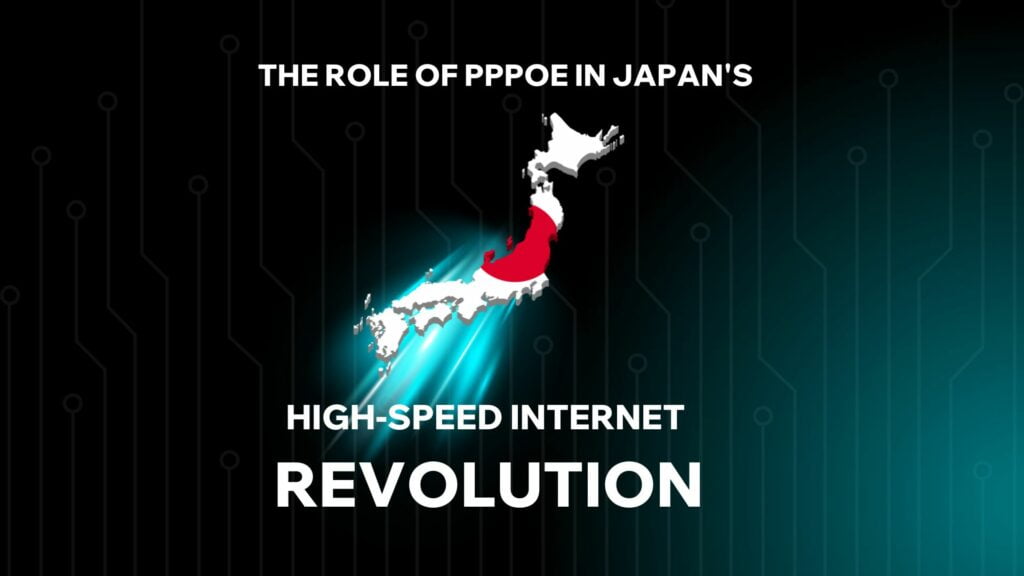
In the rapidly evolving world of telecommunication, Japan stands out for its advanced infrastructure and high-speed internet services. One of the key technologies enabling efficient broadband access in Japan is PPPoE (Point-to-Point Protocol over Ethernet). This article explores the importance of PPPoE, its benefits, and its role in Japan’s telecommunication ecosystem.
What is PPPoE?
PPPoE is a network protocol that encapsulates PPP frames inside Ethernet frames. This protocol is primarily used for establishing a direct connection between a user’s computer and the ISP’s network over a broadband connection. It combines the advantages of Ethernet and PPP to provide users with a secure, authenticated, and manageable internet connection.
How PPPoE Works
PPPoE works by creating a virtual point-to-point connection over an Ethernet network. Here’s a simplified overview of the process:
- Discovery Stage: The client (user’s computer) broadcasts a PPPoE Active Discovery Initiation (PADI) packet to discover available ISPs.
- Offer Stage: ISPs respond with a PPPoE Active Discovery Offer (PADO) packet.
- Session Stage: Once the client selects an ISP, it sends a PPPoE Active Discovery Request (PADR) packet, and the ISP responds with a PPPoE Active Discovery Session-confirmation (PADS) packet, establishing a session.
- Data Transmission: Data is transmitted through this established session, encapsulated in PPP frames.
Benefits of PPPoE
1. Security and Authentication
PPPoE requires a username and password to establish a connection, ensuring that only authorized users can access the ISP’s network. This added layer of security is crucial for protecting user data.
2. Efficient Bandwidth Management
By using PPPoE, ISPs can allocate bandwidth more effectively. It allows for precise control over individual user connections, ensuring fair usage and reducing network congestion.
3. Ease of Implementation
PPPoE leverages the existing Ethernet infrastructure, making it easy to implement without requiring significant changes to the network hardware.
4. Support for Multiple Services
PPPoE supports multiple services over a single connection. Users can enjoy internet access, IPTV, and VoIP services simultaneously, enhancing the overall user experience.
PPPoE in Japan’s Telecommunication Sector
Japan’s telecommunication sector is known for its cutting-edge technology and high standards of service. The adoption of PPPoE plays a significant role in maintaining these standards. Here are a few ways PPPoE impacts Japan’s telecommunication landscape:
1. High-Speed Internet Access
PPPoE enables high-speed broadband connections that are essential for Japan’s tech-savvy population. Whether it’s for streaming, gaming, or remote work, PPPoE ensures a stable and fast internet connection.
2. Robust Network Management
Japanese ISPs utilize PPPoE for effective network management. The protocol’s ability to manage bandwidth and ensure secure connections helps maintain the reliability of Japan’s internet services.
3. Support for Advanced Services
With the growing demand for advanced telecommunication services, PPPoE’s support for multiple simultaneous services is invaluable. It allows Japanese consumers to seamlessly access high-quality internet, IPTV, and VoIP services.
Conclusion
PPPoE is a cornerstone technology in Japan’s telecommunication sector, providing secure, efficient, and high-speed internet access. Its benefits of security, bandwidth management, and ease of implementation make it a preferred choice for ISPs and users alike. As Japan continues to lead in technological advancements, PPPoE will remain integral to its telecommunication infrastructure, ensuring that users receive top-tier services.



